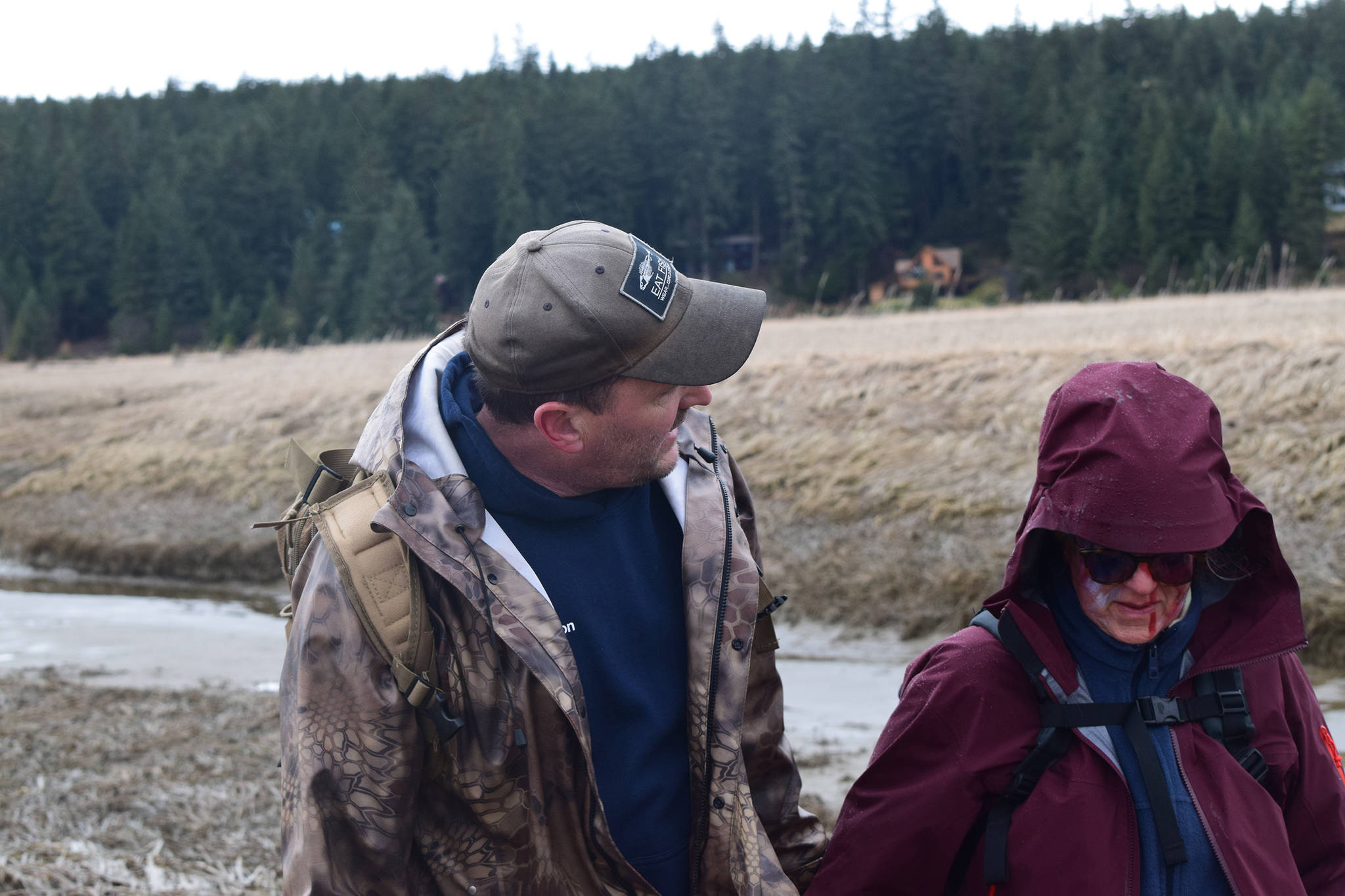The stranger showed no regard for Klawock Search and Rescue’s Gary Anderson.
“Can you hear me?” he asked three times, trudging through the yellow sedge grass at the Mendenhall Wetlands State Game Refuge on Friday morning during an emergency response drill.
With her hood folded over her sunglasses, the woman — feigning a head injury — finally acknowledged Anderson and introduced herself as “KJ,” short for “Kjiersten Davies.” She was one of several dozen fictitious crash survivors who participated in the simulated exercise.
City and Borough of Juneau Emergency Programs Manager Tom Mattice helped organize the multi-day training on emergency response, which was part of the statewide effort known as Alaska Shield. The training was centered specifically on wide-area searches and structural collapse and building stabilization, with approximately 80 attendants coming from out of town, including 30 National Guardsmen from Washington.
“We basically have been working with search and rescue teams to increase our forward triage and our ability to go through an area quickly and find out what’s going on,” Mattice said. “We’ve been working with dog teams to take our wilderness dogs and our avalanche dogs and teach them how to find people in buildings that are collapsed or structures that lost or moved or difficult to work around. We’re working with our fire crews to give them the ability to stabilize buildings that have structural issues to be able to do penetrations and extractions that make the difference.”
Friday was reserved for several elaborate search and rescue exercises. Mattice led the day off at the University of Alaska Southeast Recreation Center by explaining the disaster scenario: two planes crashed within minutes of each other during the dark afternoon of Jan. 12 — one into the bank of the Mendenhall River; the other one into the side of Mount Juneau.
Anderson and several others set out for the Mendenhall wetlands to look for crash survivors on the morning after the crash. The crew soon began gathering up wounded and traumatized survivors, and with the assistance of Capital City Fire/Rescue’s motorized skiff, began delivering them back to the command center at the end of Industrial Boulevard.
CCFR Captain Travis Mead, the incident commander, said the exercise provided an important learning opportunity.
“Command is something we exercise daily, even if it’s on a small-scale emergency versus something that’s much larger,” Mead said. “We’re always working under a command structure. … This is hopefully something I never have to experience, but if one day it does happen, this gives me a little better chance of being successful.”
By 10:30 a.m., Mead reported the arrival of “Herbie Handcock,” back to the search crew. “Handcock” was played by Jessica Oliver, a 35-year-old employee at Bartlett Regional Hospital. Oliver said felt the urge to volunteer after her former co-worker Teri Heuscher went missing last summer. Heuscher’s remains were found months later.
“It’s really important that these guys get the practice that they need,” Oliver said.
• Contact reporter Nolin Ainsworth at 523-2272 or nainsworth@juneauempire.com.

